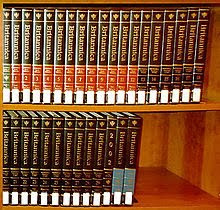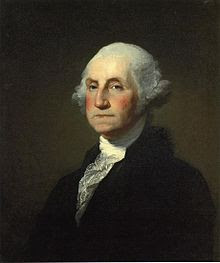1) In which year was the Regulating Act implemented?
A) 1773
2) Who is regarded as the Father of Indian Civil Service
A) Lord Cornwallis
3) Who wrote the book 'The Sepoy Mutiny and the Revolt of 1857'?
A) R C Majumdar
4) Who was the first Viceroy in British India?
A) Lord Canning
5) Who was the British king to annul the partition of Bengal?
A) George V
6) Which Viceroy did occupy the office for the longest period?
A) Lord Linlithgo
7) Who is considered to be the first martyr of the 1857 rebellion
A) Mangal Pandey
8) Which was the first university established by the British?
A) Kolkata
9) Which Indian city was attacked by the German forces during the
First World War?
A) Chennai
10) Which was the first South Indian city to host the conference of
Indian National Congress?
A) Chennai
11) Who was the founder of Bharat Matha Society?
A) Ajit Singh
12) Whose autobiography is titled 'The Indian Struggle'?
A) Subhas Chandra Bose
13) Who was known as the Socratese of Maharashtra?
A) Gopalkrishna Gokhale
14) The first cement factory in India was established at?
A) Chennai
15) Who founded the Lahore Students Union?
A) Bhagat Singh
16) Who used to be called Deenabandhu?
A) C F Andrews
17) The party founded by Motilal Nehru and C R Das?
A) Swaraj Party
18) Who was the father of Indian Archaeology?
A) Alexander Cunningham
19) Who wrote the book 'A Nation in Making'?
A) Surendranath Bannerjee
20) Who was the first Indian leader to address the people through Radio?
A) Subhas Chandra Bose
21) Who is known as the Babur of British Empire in India?
A) Robert Clive
22) What was the former name of India Gate?
A) All India War Memorial
23) The city where the rebellion of 1857 did commence?
A) Meerut
24) What is also known as August Revolution?
A) Quit India movement
25) Who was called the Father of Indian Unrest?
A) Bal Gangadhar Tilak
26) What was the name of the Parliament during the British rule?
A) Central Legislative Assembly
27) Which city became the Summer Capital of Indian in 1864?
A) Shimla
28) What was the official name of Simon Commission?
A) Indian Statutory Commission
29) Who founded the Royal Asiatic Society of Bengal?
A) Warren Hastings
30) Which was the first South Indian city to be electrified?
A) Bangalore
31) The only Indian leader to have attended all the Round Table Conferences?
A) B R Ambedkar
32) What is known as the Magna Carta of Indian Education?
A) Wood's Despatch
33) The city to host the first conference of All India Trade Union Congress?
A) Mumbai
34) The Father of Local Self Administration in India?
A) Lord Rippon
35) The book 'Unhappy India' was written by?
A) Lala Lajpat Rai
36) Who did bestow the title Sardar upon Vallabhbhai Patel?
A) Mahatma Gandhi
37) The first coal mine in India was at?
A) Ranighanj
38) Where was the first Art Gallery in India established?
A) Kolkata
39) The first budget in British India was presented by?
A) Sir James Wilson
40) Who is known as the Joan of Arc of India?
A) Queen of Jhansi
41) Who was the British Prime Minister during the revolt of 1857?
A) Palmer Stone
42) Who was elected as the Chairman of Allahabad municipality in 1923?
A) Jawaharlal Nehru
43) Muslim League was founded in the year of?
A) 1906
44) The first woman Law graduate in India was?
A) Cornelia Sorabji (1894)
45) The first trade union in India was?
A) Madras Labour Union
46) The first census in India was conducted in?
A) 1881
47) Who was the political mentor of Subhas Chandra Bose?
A) C R Das
48) The last act passed by the British Parliament for India?
A) Indian Independence Act
49) Who wrote the book 'India Wins Freedom'?
A) Maulana Abdul Kalam Azad
50) The father of Indian Railway?
A) Lord Dalhousie
A) 1773
2) Who is regarded as the Father of Indian Civil Service
A) Lord Cornwallis
3) Who wrote the book 'The Sepoy Mutiny and the Revolt of 1857'?
A) R C Majumdar
4) Who was the first Viceroy in British India?
A) Lord Canning
5) Who was the British king to annul the partition of Bengal?
A) George V
6) Which Viceroy did occupy the office for the longest period?
A) Lord Linlithgo
7) Who is considered to be the first martyr of the 1857 rebellion
A) Mangal Pandey
8) Which was the first university established by the British?
A) Kolkata
9) Which Indian city was attacked by the German forces during the
First World War?
A) Chennai
10) Which was the first South Indian city to host the conference of
Indian National Congress?
A) Chennai
11) Who was the founder of Bharat Matha Society?
A) Ajit Singh
12) Whose autobiography is titled 'The Indian Struggle'?
A) Subhas Chandra Bose
13) Who was known as the Socratese of Maharashtra?
A) Gopalkrishna Gokhale
14) The first cement factory in India was established at?
A) Chennai
15) Who founded the Lahore Students Union?
A) Bhagat Singh
16) Who used to be called Deenabandhu?
A) C F Andrews
17) The party founded by Motilal Nehru and C R Das?
A) Swaraj Party
18) Who was the father of Indian Archaeology?
A) Alexander Cunningham
19) Who wrote the book 'A Nation in Making'?
A) Surendranath Bannerjee
20) Who was the first Indian leader to address the people through Radio?
A) Subhas Chandra Bose
21) Who is known as the Babur of British Empire in India?
A) Robert Clive
22) What was the former name of India Gate?
A) All India War Memorial
23) The city where the rebellion of 1857 did commence?
A) Meerut
24) What is also known as August Revolution?
A) Quit India movement
25) Who was called the Father of Indian Unrest?
A) Bal Gangadhar Tilak
26) What was the name of the Parliament during the British rule?
A) Central Legislative Assembly
27) Which city became the Summer Capital of Indian in 1864?
A) Shimla
28) What was the official name of Simon Commission?
A) Indian Statutory Commission
29) Who founded the Royal Asiatic Society of Bengal?
A) Warren Hastings
30) Which was the first South Indian city to be electrified?
A) Bangalore
31) The only Indian leader to have attended all the Round Table Conferences?
A) B R Ambedkar
32) What is known as the Magna Carta of Indian Education?
A) Wood's Despatch
33) The city to host the first conference of All India Trade Union Congress?
A) Mumbai
34) The Father of Local Self Administration in India?
A) Lord Rippon
35) The book 'Unhappy India' was written by?
A) Lala Lajpat Rai
36) Who did bestow the title Sardar upon Vallabhbhai Patel?
A) Mahatma Gandhi
37) The first coal mine in India was at?
A) Ranighanj
38) Where was the first Art Gallery in India established?
A) Kolkata
39) The first budget in British India was presented by?
A) Sir James Wilson
40) Who is known as the Joan of Arc of India?
A) Queen of Jhansi
41) Who was the British Prime Minister during the revolt of 1857?
A) Palmer Stone
42) Who was elected as the Chairman of Allahabad municipality in 1923?
A) Jawaharlal Nehru
43) Muslim League was founded in the year of?
A) 1906
44) The first woman Law graduate in India was?
A) Cornelia Sorabji (1894)
45) The first trade union in India was?
A) Madras Labour Union
46) The first census in India was conducted in?
A) 1881
47) Who was the political mentor of Subhas Chandra Bose?
A) C R Das
48) The last act passed by the British Parliament for India?
A) Indian Independence Act
49) Who wrote the book 'India Wins Freedom'?
A) Maulana Abdul Kalam Azad
50) The father of Indian Railway?
A) Lord Dalhousie










